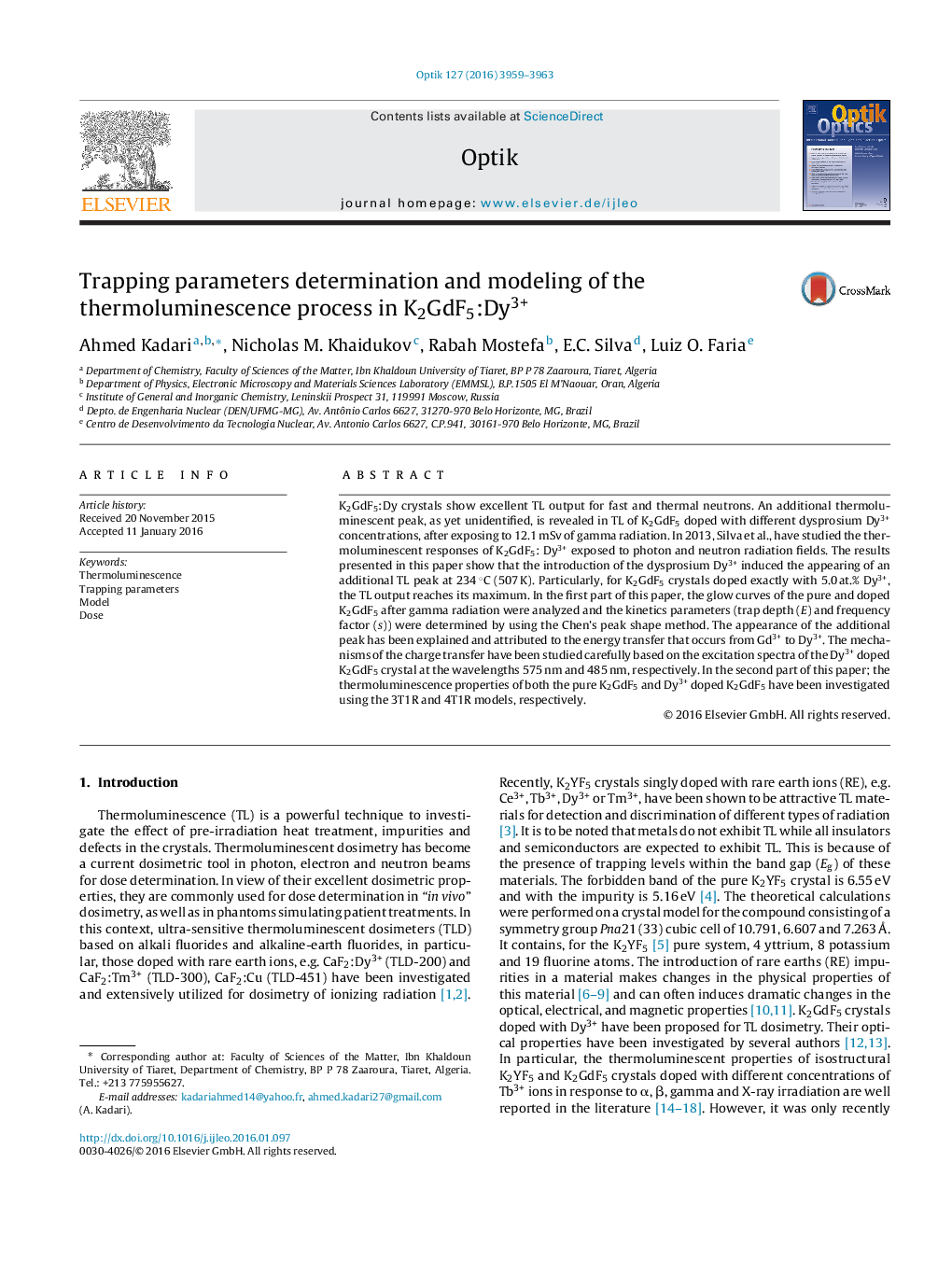| Article ID | Journal | Published Year | Pages | File Type |
|---|---|---|---|---|
| 847566 | Optik - International Journal for Light and Electron Optics | 2016 | 5 Pages |
K2GdF5:Dy crystals show excellent TL output for fast and thermal neutrons. An additional thermoluminescent peak, as yet unidentified, is revealed in TL of K2GdF5 doped with different dysprosium Dy3+ concentrations, after exposing to 12.1 mSv of gamma radiation. In 2013, Silva et al., have studied the thermoluminescent responses of K2GdF5: Dy3+ exposed to photon and neutron radiation fields. The results presented in this paper show that the introduction of the dysprosium Dy3+ induced the appearing of an additional TL peak at 234 °C (507 K). Particularly, for K2GdF5 crystals doped exactly with 5.0 at.% Dy3+, the TL output reaches its maximum. In the first part of this paper, the glow curves of the pure and doped K2GdF5 after gamma radiation were analyzed and the kinetics parameters (trap depth (E) and frequency factor (s)) were determined by using the Chen's peak shape method. The appearance of the additional peak has been explained and attributed to the energy transfer that occurs from Gd3+ to Dy3+. The mechanisms of the charge transfer have been studied carefully based on the excitation spectra of the Dy3+ doped K2GdF5 crystal at the wavelengths 575 nm and 485 nm, respectively. In the second part of this paper; the thermoluminescence properties of both the pure K2GdF5 and Dy3+ doped K2GdF5 have been investigated using the 3T1R and 4T1R models, respectively.
